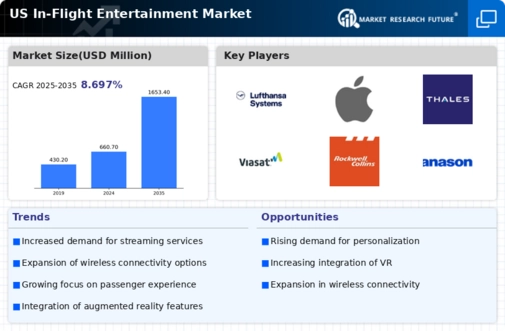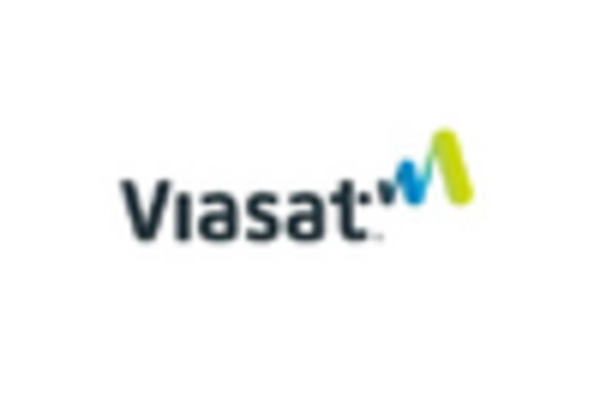Increased Passenger Expectations
As travel becomes more accessible, passenger expectations regarding in-flight entertainment are rising significantly. Modern travelers, particularly millennials and Gen Z, demand a seamless and engaging entertainment experience during flights. This shift is compelling airlines to invest in more sophisticated in flight-entertainment market solutions, including interactive gaming and on-demand content. Surveys indicate that over 70% of passengers consider in-flight entertainment a critical factor when choosing an airline. Consequently, airlines are prioritizing the enhancement of their entertainment offerings to attract and retain customers, which is likely to drive growth in the in flight-entertainment market. The focus on meeting these expectations is reshaping the competitive landscape, pushing airlines to innovate continuously.
Partnerships with Content Providers
Strategic partnerships between airlines and content providers are becoming increasingly prevalent in the in flight-entertainment market. These collaborations enable airlines to offer a diverse range of movies, TV shows, and music, catering to various passenger demographics. By leveraging established content libraries, airlines can enhance their entertainment offerings without incurring substantial costs. As of 2025, it is projected that partnerships will account for nearly 40% of the content available in the in flight-entertainment market, reflecting a shift towards collaborative models. This trend not only enriches the passenger experience but also allows airlines to differentiate themselves in a competitive market, potentially leading to increased customer loyalty.
Emergence of Virtual Reality Experiences
The emergence of virtual reality (VR) experiences in the in flight-entertainment market is poised to revolutionize how passengers engage with in-flight content. Airlines are exploring VR technology to provide immersive entertainment options, allowing passengers to experience destinations or participate interactive storytelling. This innovative approach could significantly enhance the travel experience, making long flights more enjoyable. As of 2025, it is anticipated that VR content will represent a growing segment of the in flight-entertainment market, appealing particularly to tech-savvy travelers. The potential for VR to transform traditional entertainment paradigms suggests a promising avenue for airlines to differentiate their offerings and attract a broader audience.
Regulatory Compliance and Safety Standards
The in flight-entertainment market is also influenced by stringent regulatory compliance and safety standards. Airlines must adhere to federal regulations regarding the use of electronic devices and in-flight entertainment systems, which can impact the deployment of new technologies. Compliance with these regulations is essential for ensuring passenger safety and maintaining operational efficiency. As regulations evolve, airlines are likely to invest in systems that not only meet safety requirements but also enhance the entertainment experience. This focus on compliance may drive innovation in the in flight-entertainment market, as airlines seek to balance safety with the demand for advanced entertainment options.
Technological Advancements in Content Delivery
The in flight-entertainment market is experiencing a notable transformation due to rapid technological advancements in content delivery systems. Airlines are increasingly adopting high-definition screens and advanced audio systems, enhancing the overall passenger experience. The integration of cloud-based platforms allows for real-time updates and a broader selection of content, which is crucial for meeting diverse passenger preferences. As of 2025, it is estimated that the market for in-flight entertainment systems will reach approximately $5 billion in the US, driven by these technological innovations. Furthermore, the ability to offer personalized content through data analytics is becoming a competitive advantage for airlines, indicating a shift towards more tailored entertainment options in the in flight-entertainment market.

















Leave a Comment